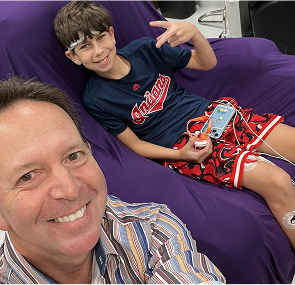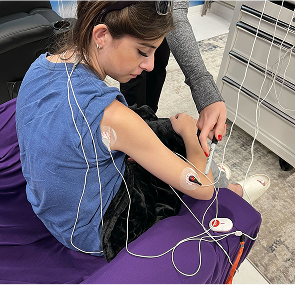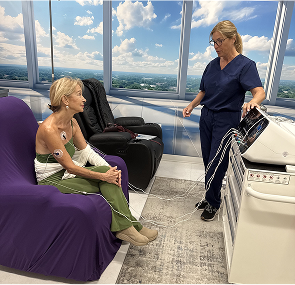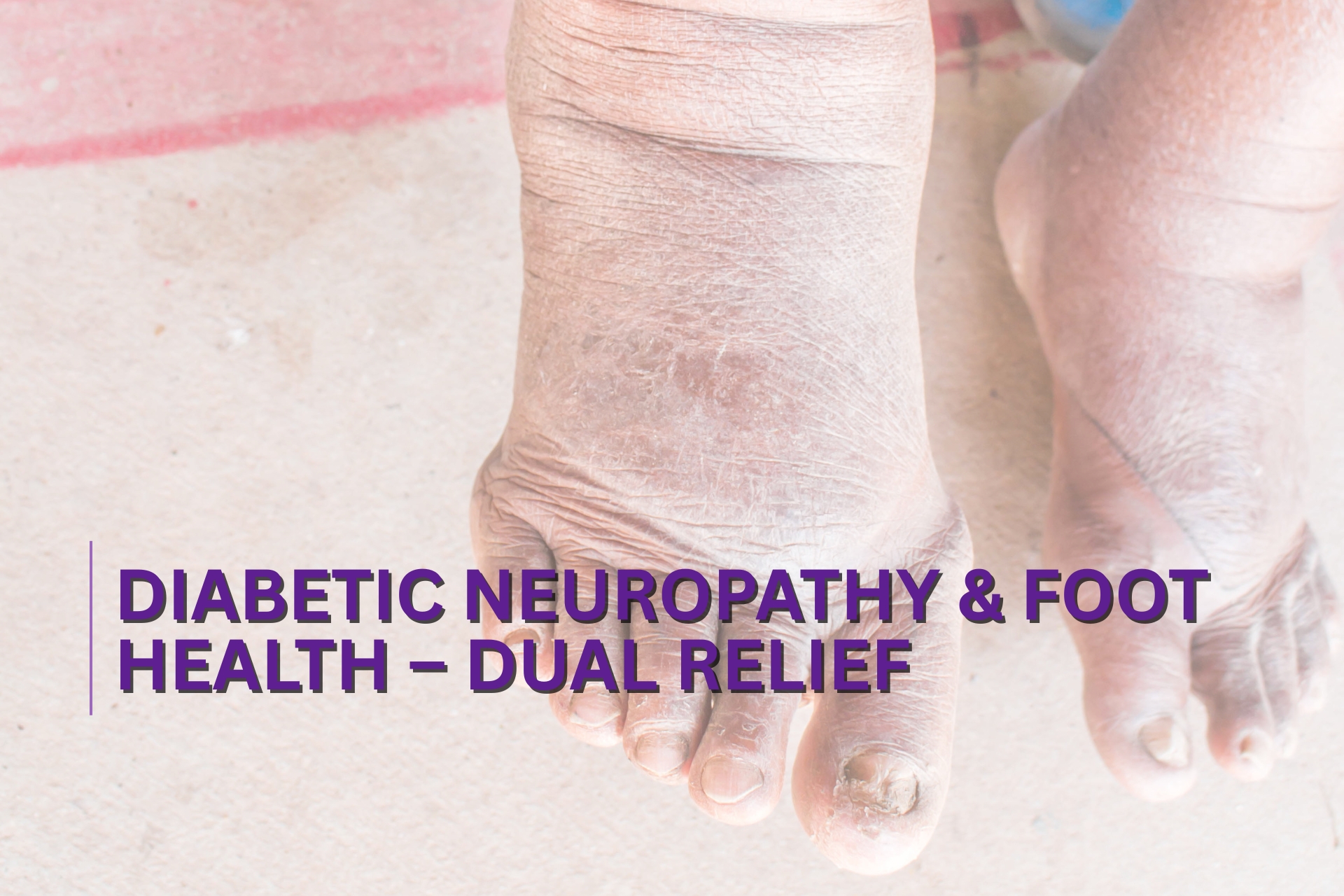Finally Walking Without Pain – How Scrambler Therapy Relieves Foot Neuropathy

Millions of people suffer from foot neuropathy, which causes persistent pain, numbness, and balance problems. Whether it's caused by diabetes, chemotherapy, or unknown factors, this nerve disorder in the feet can severely disrupt daily life.
Patients often describe the sensation as burning feet, electrical shocks, or numb toes, making every step painful. Over time, these symptoms can lead to walking difficulty, sleep disturbances, and emotional stress.
Traditional treatments—like gabapentin, nerve blocks, or physical therapy—often bring limited or temporary relief. That’s why more patients are now turning to Scrambler Therapy, a non-invasive nerve pain therapy that retrains the brain to ignore false pain signals.
This article explains how Scrambler Therapy offers real, lasting relief for neuropathy in feet, helping people walk without pain again. We’ll explore symptoms, causes, treatment options, patient success stories, and what to expect from this cutting-edge therapy.
What is Foot Neuropathy?
Your feet's sensory nerves are harmed by a form of peripheral neuropathy known as foot neuropathy. It results from disrupted communication between nerve fibers (like axons) and the brain, which leads to distorted pain signals.
Common Types of Foot Neuropathy:
- Diabetic Neuropathy – Linked to high blood sugar levels damaging nerve fibers.
- Idiopathic Neuropathy – No known cause; often age-related.
- Chemotherapy-Induced Neuropathy – Caused by neurotoxic cancer treatments.
How It Affects Daily Life:
- Burning feet or electrical shocks while walking
- Numb toes that make balance difficult
- Chronic foot tingling that disrupts sleep
- Difficulty wearing shoes or walking long distances
Neuropathy in feet often leads to painful foot nerves that interfere with basic movement. If untreated, the condition can progress and affect your quality of life severely.
Next, you'll learn how to identify early symptoms before permanent nerve damage sets in.
Symptoms and Early Warning Signs of Foot Neuropathy
Early signs of foot neuropathy often begin subtly and can worsen if left unaddressed.
Most Common Early Symptoms:
- Numb feet symptoms (especially in toes)
- Indications of tingling or "pins and needles" in the feet
- Sharp zaps or stabbing pain when resting
- Balancing issues or the sensation of wearing socks when barefoot
- Gait issues due to motor nerve dysfunction
As foot neuropathy progresses, nerve conduction deteriorates, leading to paresthesia (abnormal sensations) and even muscle weakness. Recognizing the first signs of neuropathy is key to early treatment.
In the next section, we’ll examine the root causes behind this nerve damage.
Common Causes of Peripheral Neuropathy in the Feet
Foot neuropathy has multiple underlying causes that often overlap.
Leading Causes of Foot Neuropathy:
Small fiber neuropathy and metabolic syndrome also play a role in many patients. Identifying what causes foot nerve damage is essential for developing an effective treatment strategy.
But even with the right diagnosis, traditional treatments often fail. That’s what we’ll cover next.
Why Traditional Treatments Often Fall Short
Many patients with chronic foot pain try medications or surgery—only to see recurring symptoms.
Why Standard Treatments Fail:
- Both duloxetine and gabapentin provide just short-term suppression rather than long-term recovery.
- Corticosteroids can cause systemic side effects with long-term use.
- Nerve ablation might reduce pain briefly but often doesn’t stop nerve degradation.
- Patients with severe nerve degeneration may not benefit from physical therapy.
Over time, patients build drug tolerance and experience breakthrough pain, leading to more prescriptions with diminishing returns.
This is why more people are turning to alternatives to nerve surgery—like Scrambler Therapy. Here's how it works.
How Scrambler Therapy Works to Treat Foot Neuropathy
Scrambler Therapy is a non-invasive pain treatment that uses electrical stimulation to override faulty nerve signals.
How It Works:
- Sends artificial nerve signals through electrodes on the skin
- Replaces pain signals with non-pain messages using neuroplasticity
- Reprograms the brain’s pain perception using signal replacement
This process is known as pain reprogramming. Unlike drugs, it doesn't block nerves; it re-trains them.
The result? Patients report reduced pain after just a few sessions. There are no medicines or downtime, and the therapy is safe and reproducible.
Next, let’s look at what this therapy can achieve for your daily life.
Benefits of Scrambler Therapy for Chronic Foot Neuropathy
Patients experience more than just symptom relief—Scrambler Therapy can improve multiple areas of life.
Key Benefits:
- Chronic foot pain relief without dependence on medication
- Better sleep thanks to reduced nighttime nerve activity
- Improved mobility – patients can often walk again without limping
- Drug-free lifestyle with fewer side effects and doctor visits
- Restored balance and reduced fall risk
Studies show that patients report lasting improvements in energy levels, movement confidence, and emotional well-being.
However, whom is this treatment most likely to help? That’s next.
Who Is a Good Candidate for Scrambler Therapy?
Not every person who experiences nerve discomfort is a good fit. Clinics assess each patient through neuropathy grading and medical history.
Best Candidates Include:
- Patients with diagnosed chronic nerve pain
- Those with failed medication cases
- Patients not eligible or unwilling to undergo nerve surgery
- Individuals with consistent symptom profiles like burning, tingling, or electric zaps
Treatment screening usually includes a full exam and diagnostic consultation to determine suitability. If you’re wondering “Can I get Scrambler Therapy for foot neuropathy?” – a provider will use these benchmarks.
Now, let’s see how this looks in real life through patient stories.
Real Patient Experiences from South Florida Scrambler Therapy
At South Florida clinics, patients have reported dramatic improvements after Scrambler Therapy.
Success Stories:
- A 62-year-old diabetic patient said: “No more burning at night. I’m sleeping again.”
- One chemotherapy survivor shared: “I walked into the clinic limping—after 6 sessions, I jogged to my car.”
- Another reported: “Medications failed me. Scrambler gave me my life back.”
Clinic results show consistent outcomes in walking improvement, pain-free sleep, and emotional recovery.
Next, we’ll explore the science that supports these claims.
Clinical Evidence and Research Supporting Scrambler Therapy
Numerous peer-reviewed medical studies support scrambler therapy, particularly those published in journals like Pain Medicine and Journal of Pain.
Research Highlights:
Data shows statistically significant p-values and long-term follow-up success. Clinical trials affirm its use for diabetic and chemotherapy-induced foot neuropathy.
Let’s now walk through what a session actually looks like.
What to Expect During a Scrambler Therapy Session
Sessions are painless and easy to undergo—even during a lunch break.
What Happens in a Session:
- You sit in a comfortable treatment chair
- A technician places electrodes around the painful area
- You’ll feel a gentle buzzing or tingling (not painful)
- Sessions last about 30–45 minutes
- No downtime—walk out the same day
Most clinics recommend an initial 10-session course spaced over two weeks. Frequency plans may vary depending on response.
Still have questions? We answer the most common ones below.
FAQs: Foot Neuropathy and Scrambler Therapy
Does Scrambler Therapy hurt?
No, patients feel mild tingling—often relaxing.
How often do I need sessions?
Standard protocol is 10 sessions, with maintenance as needed.
Is it covered by insurance?
Some policies cover it; otherwise, expect out-of-pocket costs.
What if symptoms come back?
Relapse rate is low; booster sessions help maintain results.
Is it safe?
Indeed, the FDA has approved it as a non-invasive, drug-free treatment for chronic pain.
If you're considering this treatment, the next step is finding the right clinic.
How to Begin: Locating a Scrambler Therapy Practitioner in Your Area
Look for a certified Scrambler Therapy center or foot neuropathy specialist with experience treating your type of nerve pain.
How to Choose a Provider:
- Ensure they offer initial consultations
- Ask about their experience with your neuropathy cause
- Check for certified technicians and modern equipment
- Review real patient testimonials from their practice
If you’re in South Florida, several pain clinics offer Scrambler Therapy for foot nerve pain. Use a treatment locator or call local specialists to start your journey toward walking pain-free again.
Experiencing Chronic Pain in South Florida?
.jpg)
Discover South Florida Scrambler Therapy is one of the nation’s leading clinics for noninvasive chronic pain relief, offering FDA-cleared Scrambler Therapy® for adults and children. Co-founded by Dr. Rick Markson, one of the few practitioners worldwide to receive advanced certification directly from the therapy’s inventor in Rome, our clinic delivers globally recognized expertise with compassionate, personalized care. If you or a loved one is living with treatment-resistant nerve pain, we invite you to schedule a consultation and explore a life beyond pain.
Recommended Reads:
📘 What is scrambler therapy?
📘 What to Expect During a Scrambler Session
📘 CRPS Pain Relief Without Drugs—Real Patient Stories
📘 Conditions that scrambler therapy can treat
Take the Next Step: Free Consultation at South Florida Scrambler

Every day counts when we suffer from chronic pain. South Florida Scrambler Therapy offers a free initial consultation to determine if Scrambler is right for you. Schedule Today:
- Speak directly with Dr. Rick Markson’s team
- Learn about treatment protocols and insurance
- Complete a customized treatment plan
- Start seeing results within days, not months
📞 Call Now or Visit website: www.southfloridascramblertherapy.com
📍 We serve Palm Beach, Fort Lauderdale, and Miami from our location at 100 NW 100th Ave, Plantation
You Can Follow Us through Our Social Media:
📸Instagram—Day-in-the-life stories from our patients
👍Facebook—Success journeys and community support
You deserves to laugh, and enjoy life without pain. The journey starts here.
Start Your Nerve Pain-Free Journey Today






